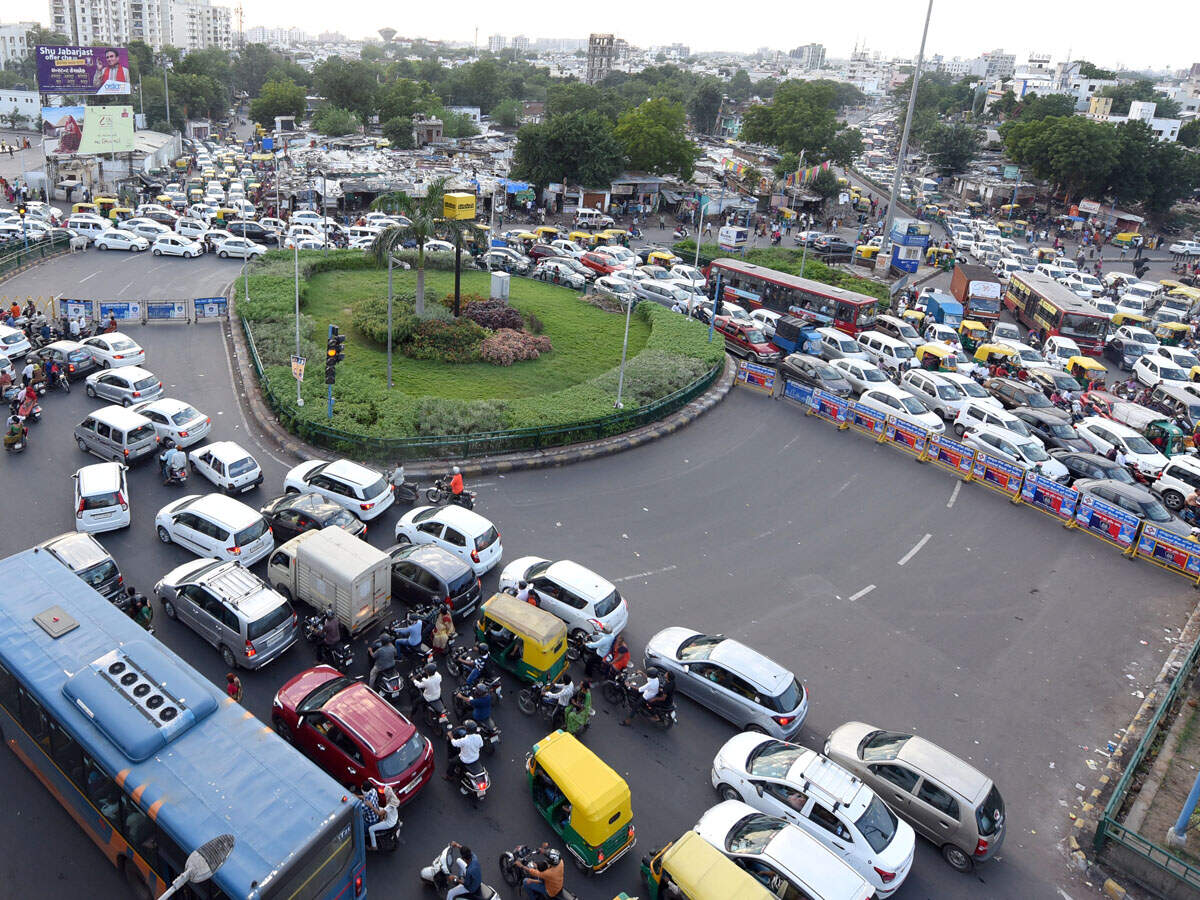
AHMEDABAD: If the roads have started appearing chock-a-block with vehicles over the years, it’s for a reason. Gujarat has the highest vehicle ownership of 450 vehicles per 1,000 people in India!
A Union transport ministry report on motor vehicles registration that recorded data up to December 31, 2019, claimed that Gujarat has been enjoying the envious position for the past five years.
Gujarat is followed by Tamil Nadu with 445 vehicles per 1,000 population, Karnataka (372), Maharashtra (335) and Uttar Pradesh (190).
One of the major reasons, say experts, is poor public transport network in cities, less bus frequency in big number of villages and a the culture of multi-tasking in Gujarat which prompts people to buy their own vehicle instead of depend on public transport.
Of the total 31.72 crore vehicles registered in India, Gujarat along with Maharashtra, Uttar Pradesh, Karnataka, Tamil Nadu account for nealry 49% of the total vehicles registered in India. Maharashtra has the highest share of 11.99% followed by UP (11.38%), Tamil Nadu (10.11%), Gujarat (8.54%) and Karnataka (7.19%).
According to road transport year book 2017, Gujarat has 2.21 crore registered vehicles of which 2 crore are noncommercial. Of these, 25.28 lakh were registered cars. State added over 51 lakh vehicles in the last three years from 2017-2019.
Amit Khatri, a road safety expert said burgeoning number of vehicles registered was a sign failure of a robust, userfriendly public transport system.
‘Public transport system has failed its purpose’
BRTS and AMTS in Ahmedabad has failed to bring more people on board by catering to their needs. Also, as travel distance is comparitively still less as compared to metros, people prefer to use their own vehicle,” said Khatri.
A senior government officer, on condition of anonymity, conceded that prior to launch of Bus Rapid Transport in Ahmedabad in 2009, more than eight lakh passengers used AMTS. Instead of this number growing over the decade, only 6.5 lakh people use BRT and AMT buses for transport!
“Apart from this, around 7,000-odd villages have bus connectivity just once or twice a day forcing people to use their private vehicles. In cities, the wait time for a bus is over 10 to15 minutes, which equals travel time of six km. “Why would a person wait?” quizzed the official.
Biren Patel, secretary of the Ahmedabad Traffic Consultative Committee (ATCC) says public transport is not designed as per people’s requirement in Ahmedabad, Rajkot, Surat and Vadodara. “Moreover, Gujaratis prefer for invest in a vehicle as their ward reaches class10 or 12 and for the women too. I have even seen women commute from one village to another on their two wheelers,” Patel said.